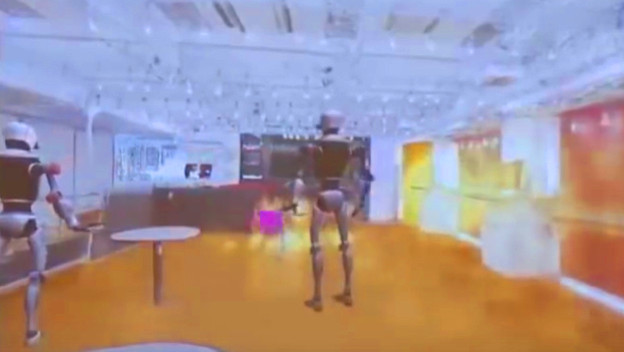The world can be a dangerous place. At the least, Mother Nature’s fury can wreak havoc on our comparatively fragile human constructs. No matter how we try to fight her, we know we have to be prepared for things to go majorly wrong. I mean, if you build a home in the middle of tornado alley, you have to be prepared for the fact that a tornado may come along and destroy it at some point. The same is true of areas that see lots of earthquakes or are scientifically proven to be earthquake prone. If you live in those areas, your home could be damaged or destroyed. I’m sure you’re already wondering what in the h-e-double hockey sticks this has to do with video games though. As it turns out, possibly a great number of things.
The Graduate School of Informatics at the Nagoya University in Japan has been studying virtual reality. One professor from Nagoya University, Katashi Nagao, shared a little bit of what the University has been up to during a lecture that was hosted by Microsoft. As it turns out, researchers at Nagoya University have been exploring ways to use virtual reality to train people how to react to natural disasters. The best way to learn anything is by doing, that’s why things like fire, tornado, and earthquake drills exist in schools and work places. But what if you could learn with a replica of the real thing, that would certainly allow us to better understand what to do during disasters right? That’s exactly what the Nagoya researchers hope to be able to do.
They’re working on the ability to simulate scenarios like fires, earthquakes, and flooding, but all of these things need a location to act it out in. That’s where their “Building-scale VR” techniques are coming in handy. Nagoya researchers have created a mobile robot that is decked out with a 4K panoramic camera, RGB depth camera, and laser-range sensor. This allows it to map out buildings and the objects within it accurately and to scale. With this diligent robot, the researchers can realistically recreate the interior of buildings to scale. They can also scale the “play area” up to the size of the actual building. This is important for those who wish to endure disaster training in buildings that they are familiar with.
A fantastic side effect to all of this research is what the video game industry can gain from it. It’s clear that some companies within the industry are already keeping one eye on Nagoya, seeing as how Microsoft hosted this lecture. At the least, games could benefit from already accessible scale models of buildings in VR. Imagine if the Fallout series had the ability to recreate the interior of well-known landmark buildings. The development time could be much shorter without sacrificing detail. Artists and animators would have an easier time recreating things exactly as they are in the location with already built models of rooms and objects within it. The subject of scaling VR locations has also been a major issue the industry has been wrestling with. Nagoya University’s research could possible help solve that problem.

The other great side effect of Nagoya University’s efforts is the disaster work they are doing. The interactive models of how disasters affect modern buildings would be a great learning resource for artists, animators, and programmers. The way said disasters act within the buildings would be a good resource as well. There’s also the fact that if these VR disaster scenarios are widely created and utilized, they can operate as a test study for developers on how people react. The reactions of those who use these disaster scenarios in the future could be used to adapt the way VR games play by tailoring them to how human’s naturally react to stimulus.
At the very least, Nagoya University’s research into developing these scale disaster models could help the VR video game industry implement more realistic weather. The researchers are already using their models to test out realistic fire drills. Say a VR game developer used this same knowledge to better create realistic fires within games. Say that VR games utilize real fire patterns, rather than simply having a fire off to one corner of a room. Players would have a more realistic experience of having to vacate the area, which could lead to more immersive games.
Nagoya University’s disaster scenarios in real scale VR environments might not seem related to video games at first. But when you consider the possibilities you start to see that this research will benefit the industry in a number of ways. There are probably even more ways for VR developers to use the research that I haven’t touched on! What do you think of the research? Would you be interested in trying a realistic to-scale disaster training simulation? Do you think these sims will help make VR video games more realistic? Let’s hear your thoughts below!
